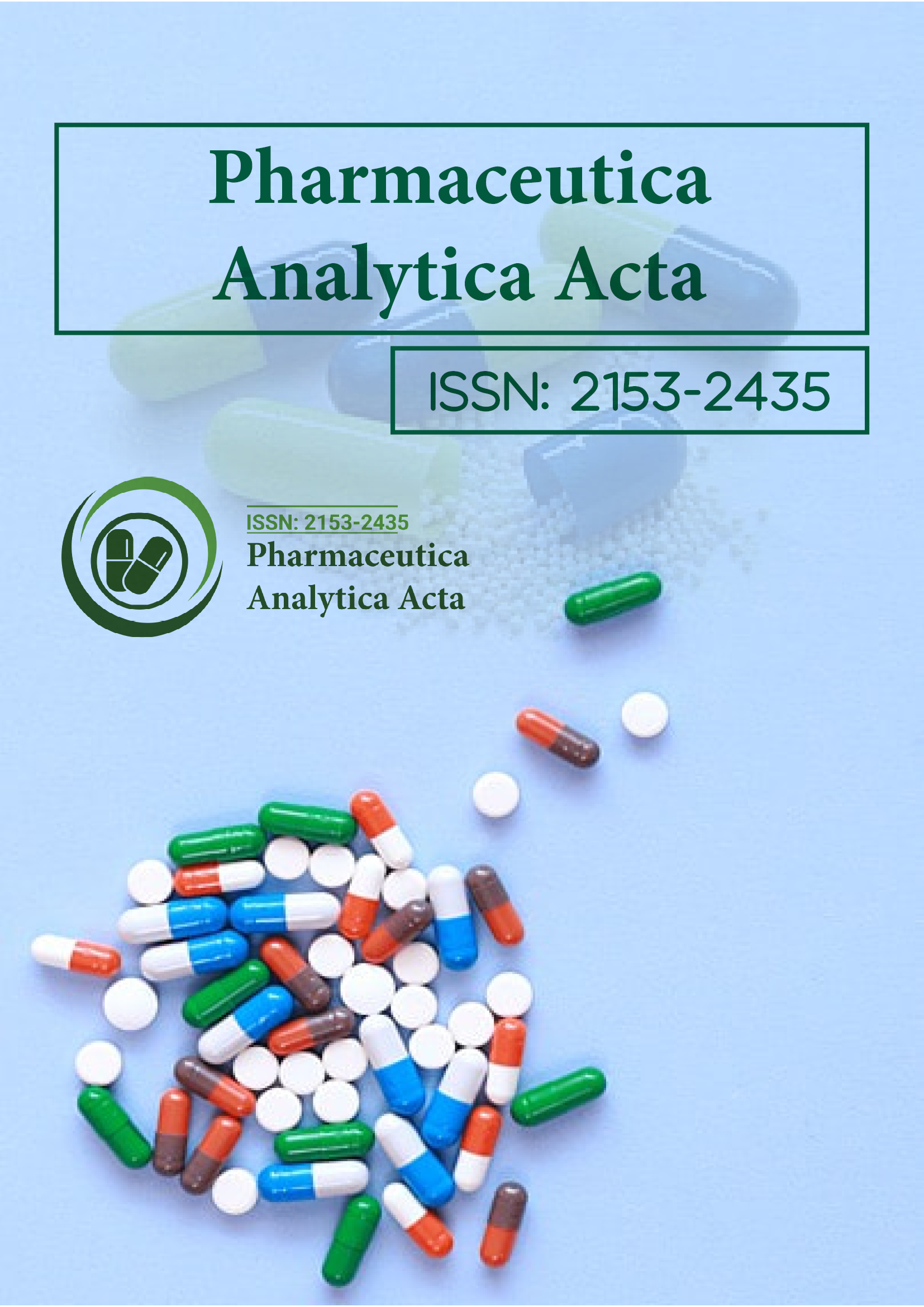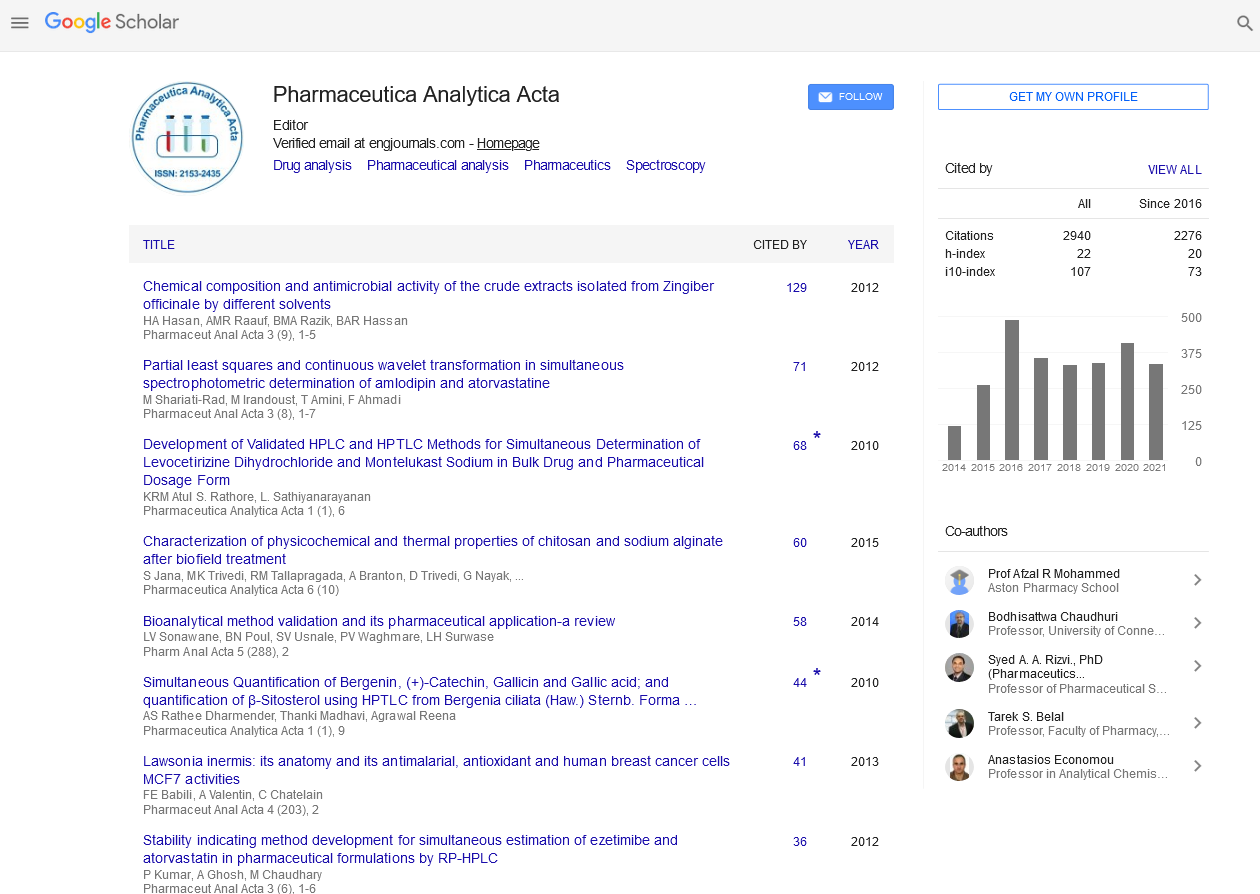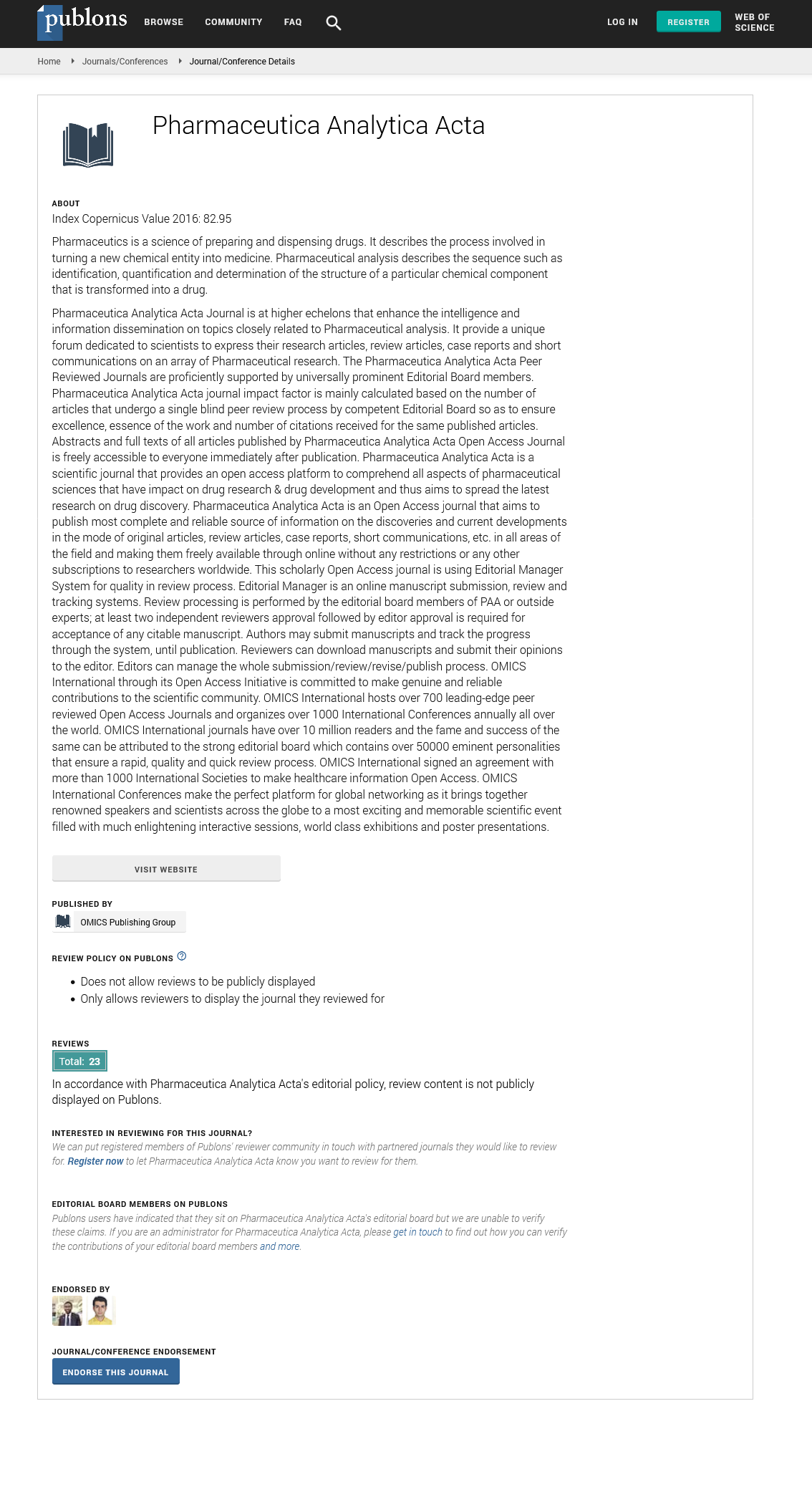Indexed In
- Open J Gate
- Genamics JournalSeek
- Academic Keys
- JournalTOCs
- The Global Impact Factor (GIF)
- China National Knowledge Infrastructure (CNKI)
- Ulrich's Periodicals Directory
- RefSeek
- Hamdard University
- EBSCO A-Z
- OCLC- WorldCat
- Publons
- Geneva Foundation for Medical Education and Research
- Euro Pub
- Google Scholar
Useful Links
Share This Page
Journal Flyer

Open Access Journals
- Agri and Aquaculture
- Biochemistry
- Bioinformatics & Systems Biology
- Business & Management
- Chemistry
- Clinical Sciences
- Engineering
- Food & Nutrition
- General Science
- Genetics & Molecular Biology
- Immunology & Microbiology
- Medical Sciences
- Neuroscience & Psychology
- Nursing & Health Care
- Pharmaceutical Sciences
Influence of the formulation factors of structured polymeric aggregates nanoparticles preparations based on chitosan on the release characteristics of Diclofenac
5th International Conference and Exhibition on Pharmaceutics & Novel Drug Delivery Systems
March 16-18, 2015 Crowne Plaza, Dubai, UAE
Bashar M Altaani1, Adnan Ali Badwan2, Aiman A Obaidat1, Bassan M Tashtoush1, Iyad Said A Q Rashid2 and Ayman Khdair3
Posters & Accepted Abstracts: Pharm Anal Acta
Abstract:
The objective of this research is to understand the influence of formulation factors such ratio and molecular weight of chitosan, amount and type of fatty acid used, type and concentration of chitosan on the release of diclofenac from nanoparticle liquid preparation based on chitosan. The nanoparticle preparations are made of the drug, chitosan, fatty acid and surfactant. Chitosan is capable of forming complexes with anionic substances. Diclofenac as anionic substance is capable of forming complexes with chitosan. Fatty acid was used to shield the drug as it also forms complexes with chitosan. Addition of suitable surfactant made the surface of the particles hydrophilic where it can be dispersed in water as nanoparticle liquid preparation. Different nanoparticles formulations were prepared by varying the concentrations and the type of materials used. Drug release was studied by placing the formulation inside a semipermeable dialysis tube capable of retaining the complex and allowing the passage of the free drug. The bag was placed inside 6.8 phosphate buffer in USP apparatus II at rotational speed of 100 rpm. Samples were withdrawn at suitable intervals and analyzed using validated HPLC method. Results demonstrated that formulas were capable of sustaining the release of the drug and the formulation factors studied influenced drug release characteristics. The change in release characteristics was correlated with physicochemical properties of the nanoparticle preparations specially the viscosity of the polymer used or its concentration. Control of the factors studied is essential for the development of sustained release nanoparticle formulation with optimum drug release.


